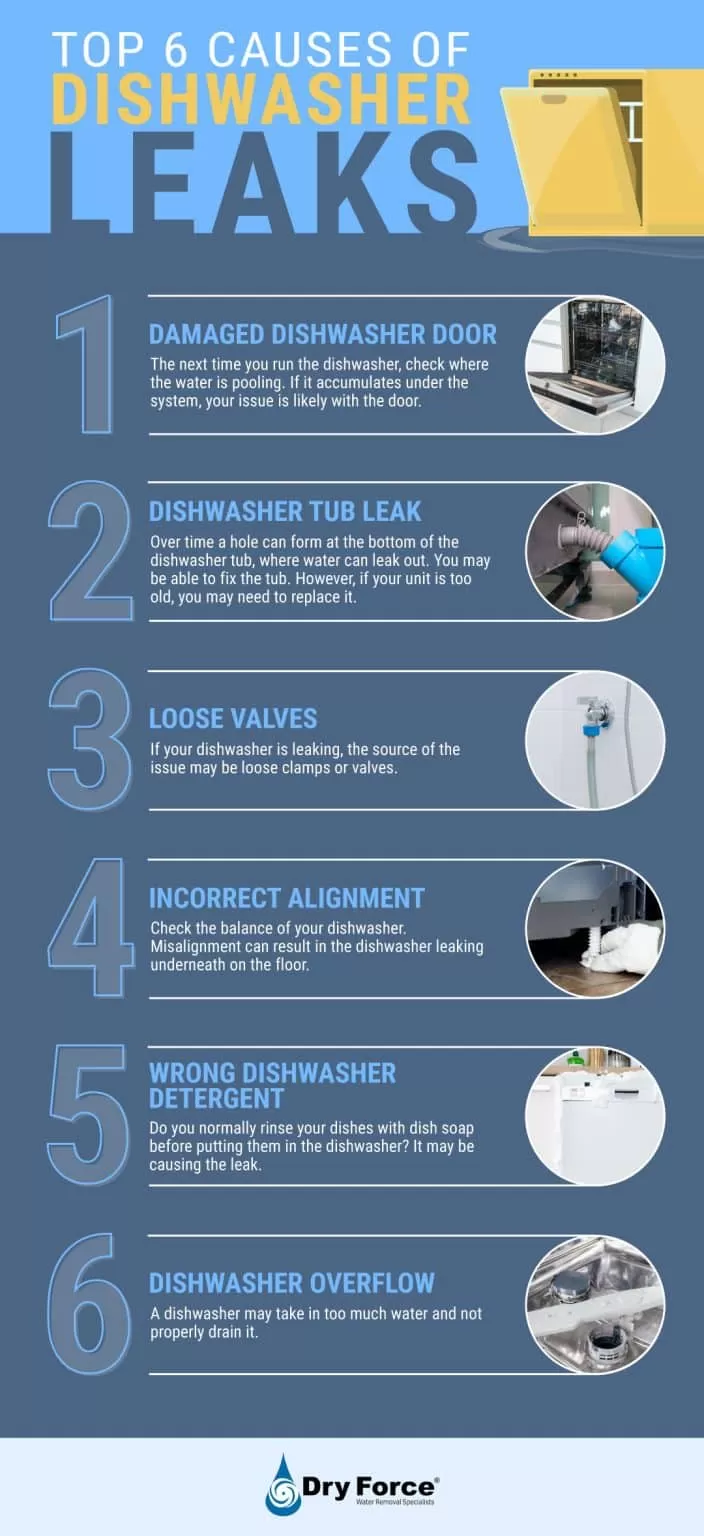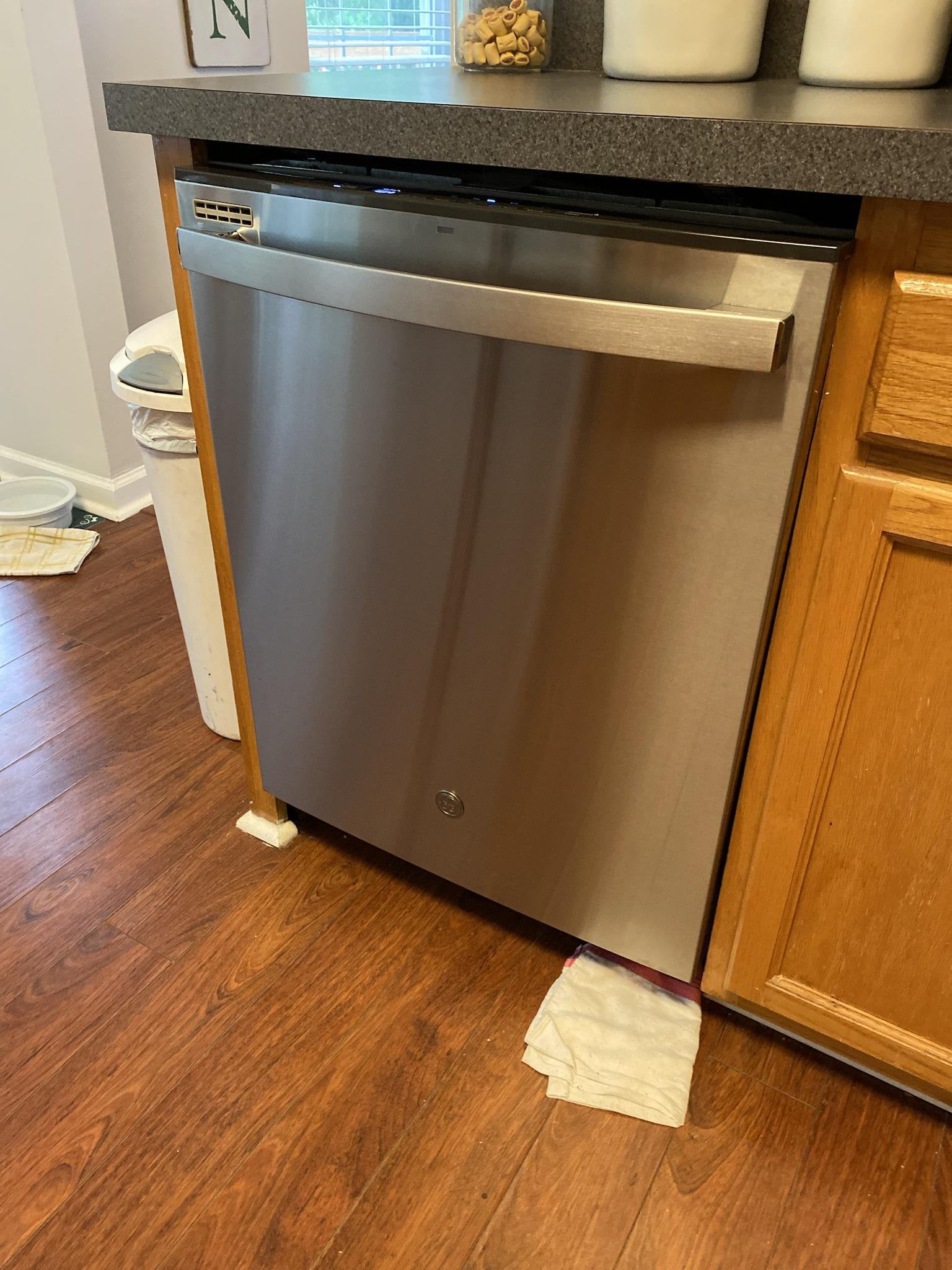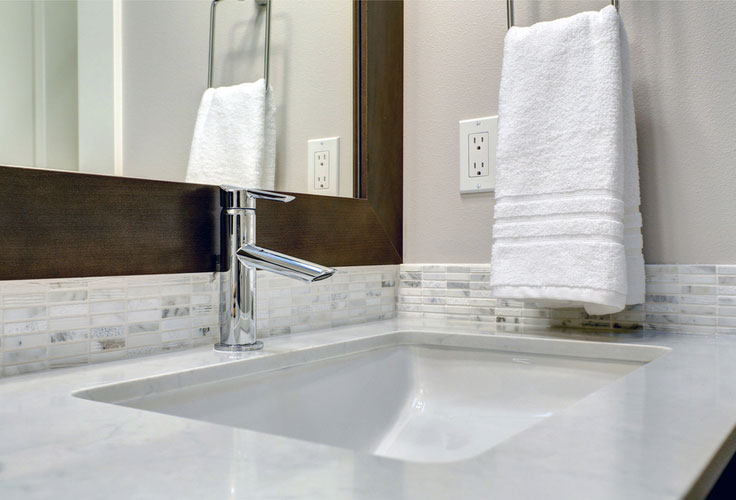Has your dishwasher started to leave a pesky puddle? Worry not!
We’ve got an easy-to-follow guide for you.
Let’s fix that leak from the bottom right corner!
Step 1: Safety First!
- Turn off the power.
- Shut off the water supply.
- Dry your hands well.
Always stay safe when fixing appliances.
Step 2: Check the Usual Suspects
Leaks often happen for common reasons.
Look at these parts first.
| Part | Cause of Leak |
|---|---|
| Door Seal | Worn out or dirty |
| Water Inlet Valve | Cracked or loose |
| Pump | Seals broken or worn |

Credit: www.doityourself.com
Step 3: The Door Seal Test
Here’s what to do:
- Find the door seal – It’s the rubber around the door.
- Look for gaps or dirt – Clean it or replace it if it’s bad.
Step 4: Inspect the Water Inlet Valve
This valve lets water into your machine.
- Find the valve at the bottom.
- Check if it’s cracked or loose.
- Tighten or replace as needed.
Step 5: Pump and Seals Check
The pump moves water around.
- Locate the pump.
- Examine its seals.
- Replace them if they are damaged.
Step 6: Hose Connections and Gaskets
Water moves through hoses in a dishwasher.
Make sure every hose is tight and not cracked.
- Look for hose connections.
- Check for leaks around them.
- Replace any worn hoses or gaskets.
Step 7: When to Call a Professional
Sometimes, you might need an expert’s help.
- If you suspect electrical issues, don’t fix it alone.
- Not comfortable with DIY? Get a pro.
- Continued leaks after trying everything? Time to call in the expert.

Credit: www.fredsappliances.com
Step 8: Prevent Future Leaks
Keep your dishwasher running well.
- Clean it regularly.
- Inspect seals and hoses often.
- Don’t overload the dishwasher.
Frequently Asked Questions Of Dishwasher Leaking From Bottom Right Corner
Why Is My Dishwasher Leaking From The Bottom?
A dishwasher leaking from the bottom typically indicates a compromised seal, a loose hose, or a faulty pump. Regular maintenance can often prevent leaks by ensuring all components remain secure and functional.
Can Damaged Door Seals Cause Dishwasher Leaks?
Yes, damaged door seals are a common culprit for dishwasher leaks. Over time, wear and tear can cause seals to deteriorate, allowing water to escape from the appliance’s bottom corners.
What Should I Check For A Leaking Dishwasher?
When troubleshooting a leaking dishwasher, examine the door gasket, water inlet valve, spray arm, and bottom basin for obstructions, cracks, or incorrect alignment. Promptly addressing these issues can prevent further damage.
How Often Do Dishwashers Need Maintenance To Prevent Leaks?
Regular maintenance, ideally every 3-6 months, can drastically reduce the risk of your dishwasher leaking. This includes inspecting and cleaning seals, filters, and spray arms, and checking for loose connections.
Is A Professional Required To Fix A Dishwasher Leak?
While minor issues like clogged filters can be DIY fixes, significant leaks, especially from faulty internal components, typically require the expertise of a professional appliance technician to ensure proper and safe repair.





Leave a Reply